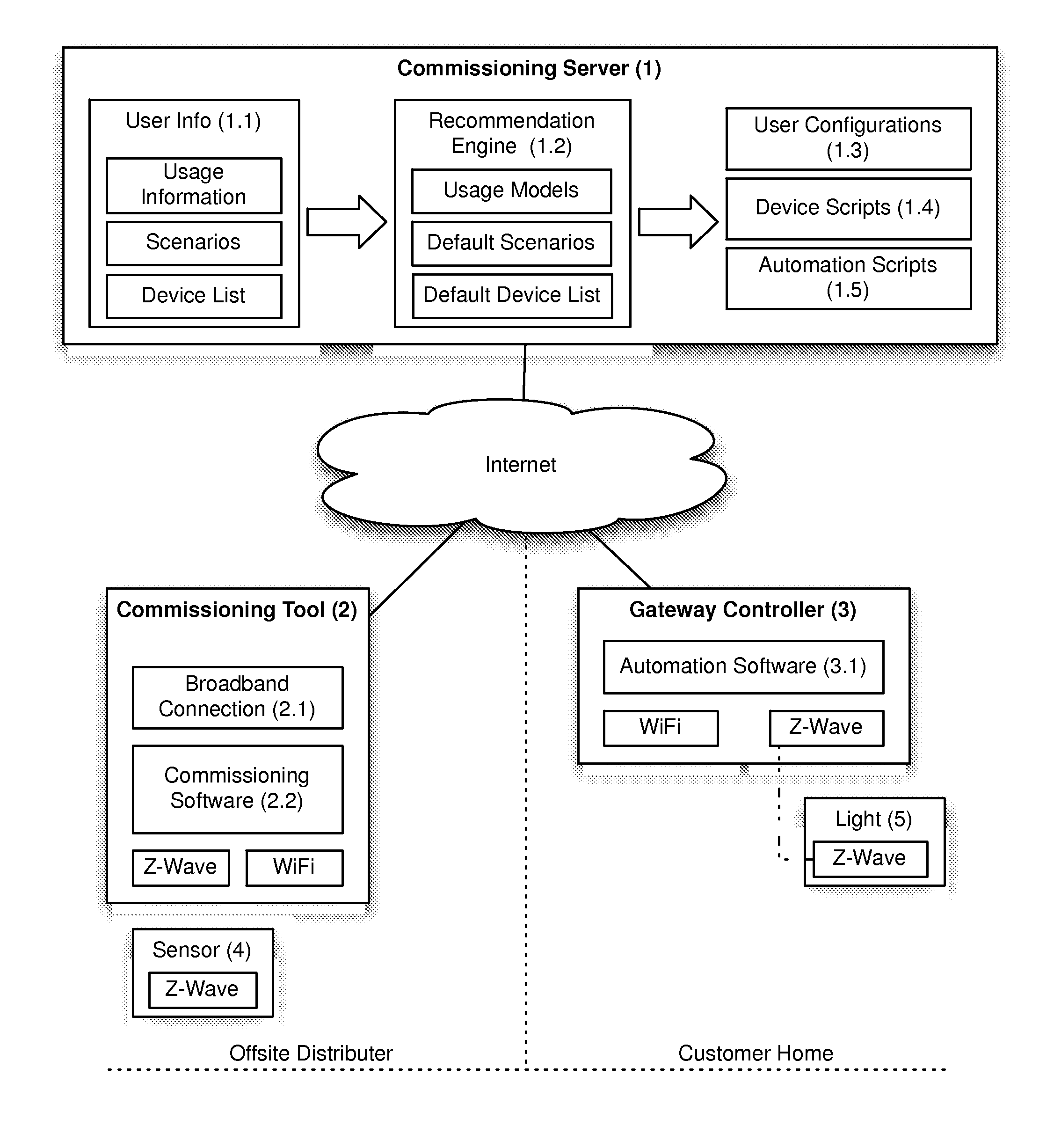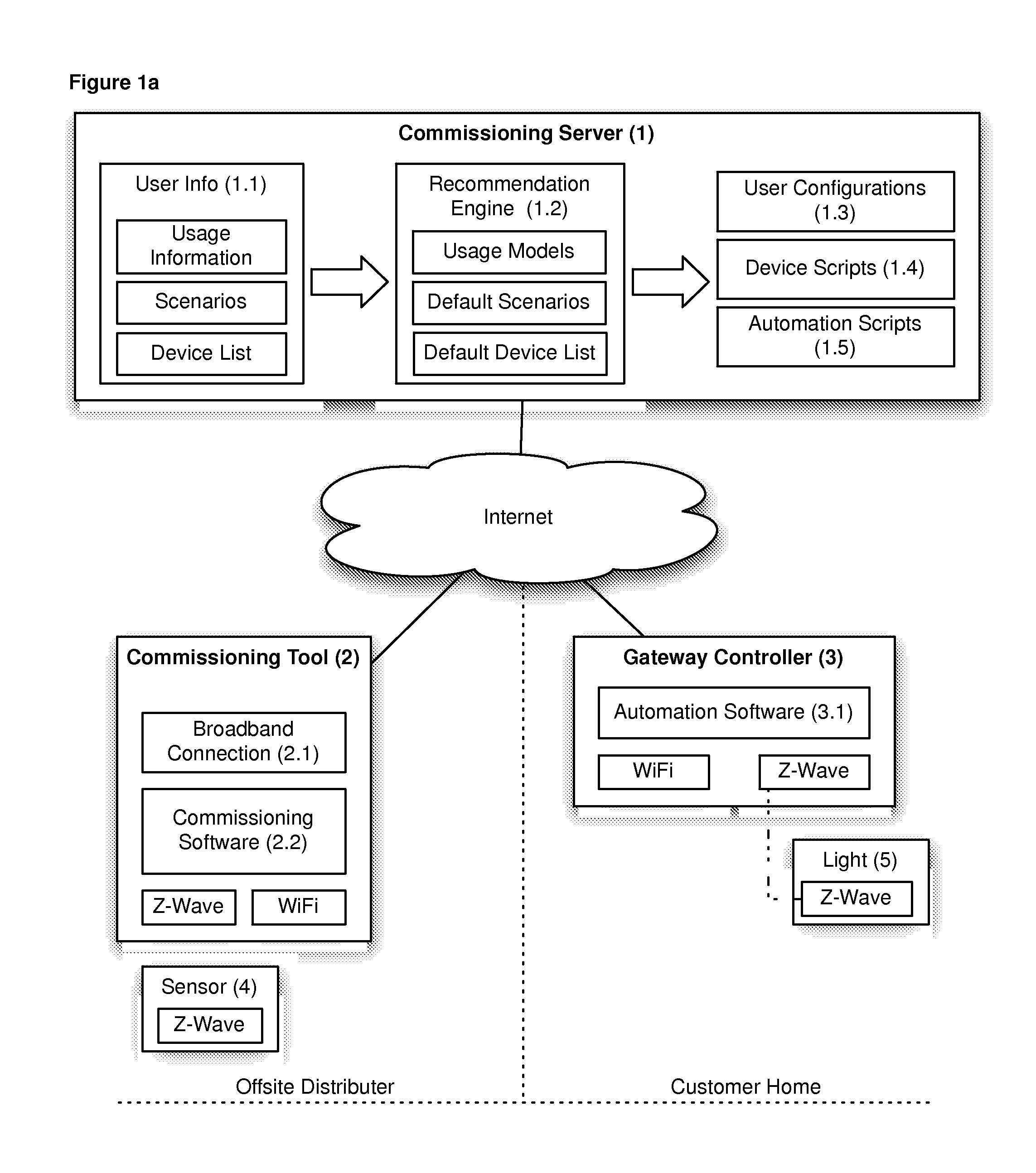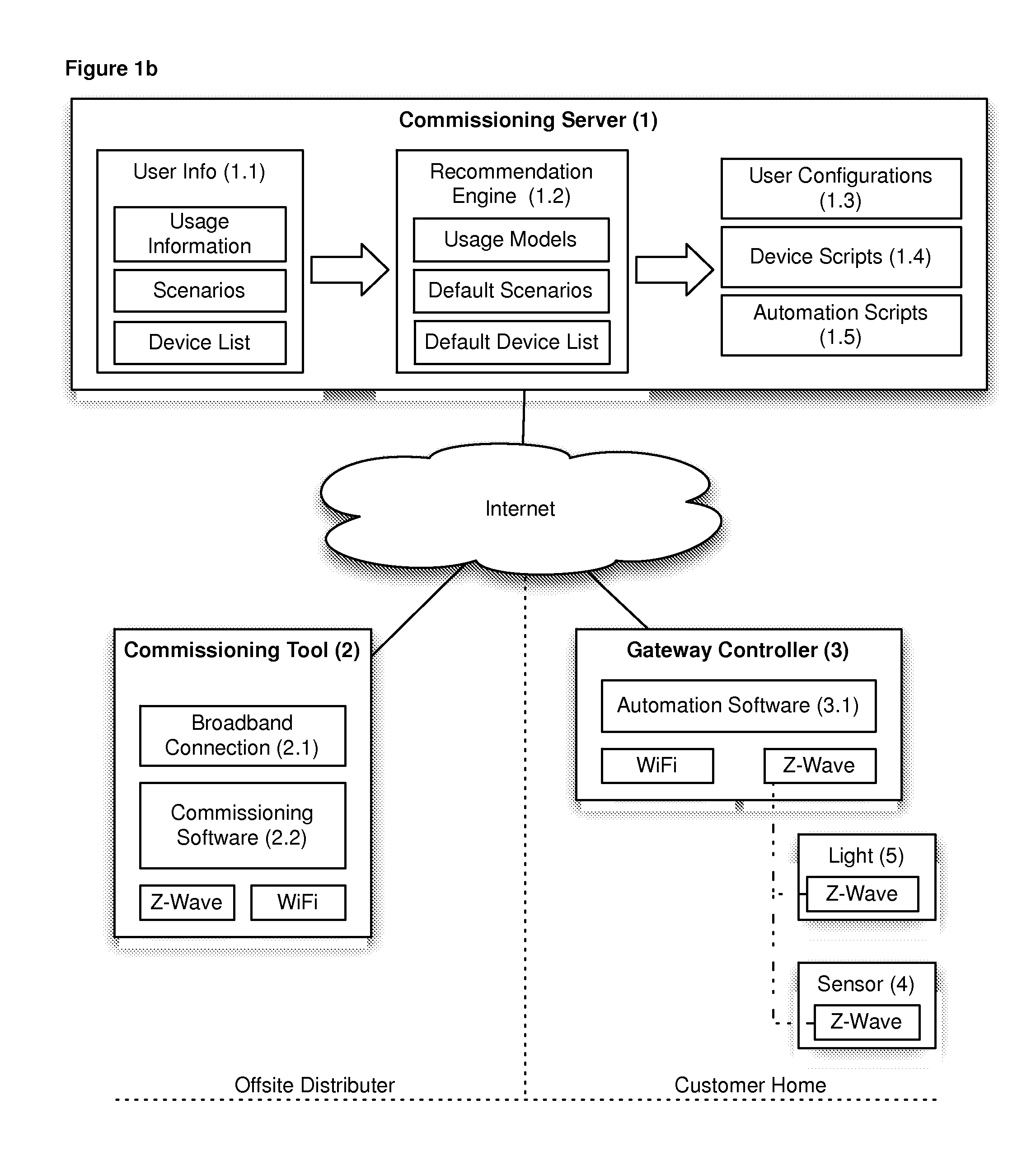Commissioning devices for automation systems
a technology for automation systems and commissioning devices, applied in the field of automation systems, can solve the problems of limiting the mass deployment of home automation, the complexity of the commissioning process, and the inability of components to work together, and achieve the effect of reducing the assistance of users
- Summary
- Abstract
- Description
- Claims
- Application Information
AI Technical Summary
Benefits of technology
Problems solved by technology
Method used
Image
Examples
Embodiment Construction
[0033]FIG. 1a and FIG. 1b are block diagrams representing, on the lower left, an Offsite Distributer and, on the lower right, a Customer Home. Gateway Controller (3) is connected to the Internet using WiFi and uses a wireless standard such as Z-Wave to communicate with and control Light (5). Gateway (3) contains Automation Software (3.1) to operate connected devices in the home. In FIG. 1a, there is an operating Z-Wave ecosystem that contains Light (5) in the customer's home.
[0034]FIG. 1a and FIG. 1b depict connectivity through the Internet to a Commissioning Server (1) for setup and control of connected devices. The Commissioning Server (1) offers a scenario to the homeowner where a new sensor (4) will enable light (5) to turn on and off when occupancy is detected in the home. The Commissioning Server (1) selected the aforementioned scenario to present to the user by using the User Info (1.1) about what devices are installed in the Customer House, usage of those devices, and a list...
PUM
 Login to View More
Login to View More Abstract
Description
Claims
Application Information
 Login to View More
Login to View More - R&D
- Intellectual Property
- Life Sciences
- Materials
- Tech Scout
- Unparalleled Data Quality
- Higher Quality Content
- 60% Fewer Hallucinations
Browse by: Latest US Patents, China's latest patents, Technical Efficacy Thesaurus, Application Domain, Technology Topic, Popular Technical Reports.
© 2025 PatSnap. All rights reserved.Legal|Privacy policy|Modern Slavery Act Transparency Statement|Sitemap|About US| Contact US: help@patsnap.com



